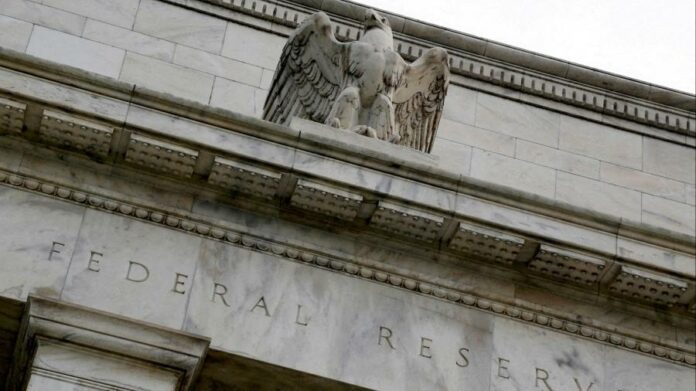The Federal Reserve is poised to signal it plans to continue inflicting higher interest rates on the US economy, even as it again slows the pace at which it is raising its benchmark rate amid signs inflation has peaked.
At their first gathering of the year this week, policymakers at the US central bank are set to move down to a more typical pace of rate rises, implementing a quarter-point increase that will lift the fed funds rate to a new target range of 4.50 per cent to 4.75 per cent.
The shift comes as the Fed has repeatedly raised the federal funds rate by unusually large increments — including four consecutive 0.75 percentage point rises last year — in an attempt to tame spiralling prices. At its previous meeting in December, it opted for a half-point increase.
However, lingering scepticism about how quickly inflation will continue to fall has put pressure on the central bank to maintain a hawkish stance to ward off speculation that it plans to pause its monetary tightening campaign imminently.
“I expect the step down to a 25-basis-point rate hike to come with ‘we have more work to do’ language,” said Jonathan Pingle, a former Fed economist now at UBS. “This is going to be a meeting where they’re going to try not to be too dovish.”
The policy statement that accompanies the rate decision will be closely scrutinised for any changes to the guidance provided since last March, which has said the Federal Open Market Committee expects “ongoing increases in the target range will be appropriate”.
Many expect the Fed to hold that line or tone it down minimally, and for chair Jay Powell to double down on the message at Wednesday’s press conference. A shift in the language to “some further tightening”, for example, could suggest the Fed is closer to ending its rate-rising cycle.
The decision to once again slow the pace of tightening comes as Fed officials look to gain more flexibility as they approach a “sufficiently restrictive” benchmark rate to get inflation under control. They also want to buy more time to assess incoming data, which have become mixed as their policy actions have started to take effect.
Lael Brainard, the vice-chair who is among the most dovish FOMC members, recently cautioned the “full effect on demand, employment, and inflation of the cumulative tightening that is in the pipeline still lies ahead”.
Business activity, especially in manufacturing, has already taken a hit alongside the housing sector, while Americans are spending less readily and more often dipping into savings or taking on debt to cover expenses. That comes as companies begin to cut costs, slashing hours for workers and reducing temporary help.
Wage growth has slowed but still remains strong amid a tight labour market, keeping pressure on prices across the services sector. Fed governor Christopher Waller has warned against being “head-faked” by positive data while underlying inflation remains too high, saying he needs to see a full six months’ worth of evidence to feel confident in pausing rate rises.
“The hard decision [of when to pause] isn’t quite here yet,” said Ellen Meade, who served as a senior adviser to the Fed’s board of governors until 2021. “Powell probably doesn’t want to stop until he thinks he’s ready to stop and hold for a while.”
Most officials say the fed funds rate will need to surpass 5 per cent and for that level to be maintained through 2024. However, traders on Wall Street have rebuffed that view, pricing in a peak policy rate of less than 5 per cent, with roughly half a percentage point of cuts by December. Financial conditions have also loosened, threatening to counteract some of the tightening under way.
“Market-determined rates are where the rubber really meets the road in transmitting tighter conditions and where some of the strongest impact on the economy occurs,” said Dennis Lockhart, former president of the Atlanta Fed.
“A step down to a quarter of a point move could encourage the narrative in the markets of a decline in rates in the second half of the year. This is not necessarily what the committee wants as a total inflation-fighting package.”
Donald Kohn, a former Fed vice-chair, said the central bank can defend against easier financial conditions with its rhetoric and, if necessary, higher interest rates than it has signalled.
Lorie Logan, president of the Dallas Fed and a voting member on the FOMC, acknowledged as much in a recent speech, when she said the central bank “can and, if necessary, should adjust our overall policy strategy to keep financial conditions restrictive even as the pace slows”.
“Their mission this year is to wring excess inflationary pressures thoroughly out of the economy [and] I don’t think they are of a mind to let up too early,” said Lockhart. “The Fed is playing a big-stakes, long-term game.”






